Part 1: Evidence and Reflection on Your Learning
During this course, I did four critical blogs that explored the importance of digital and internet platforms in education. My first blog explored the relevance of internet technology in solving contemporary issues by taking the case of Covid-19.
Blog 1 link: https://ziyuzhou.opened.ca/topic-1-post/
Comments I received:
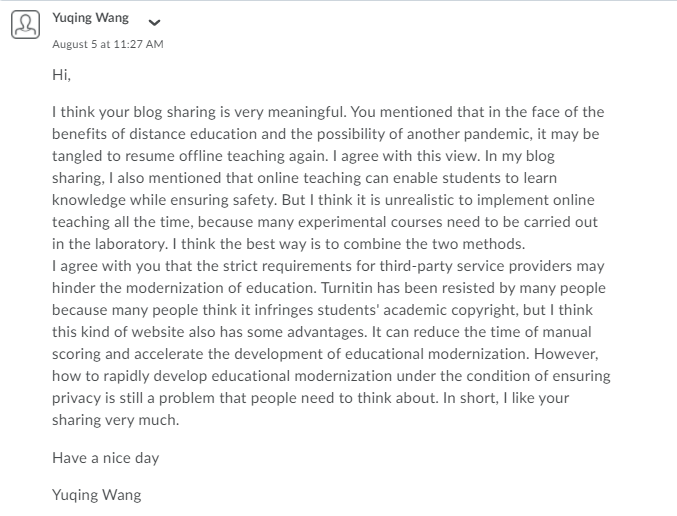
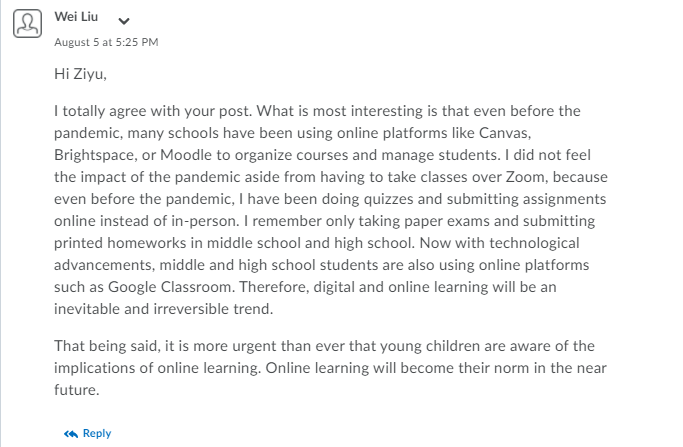
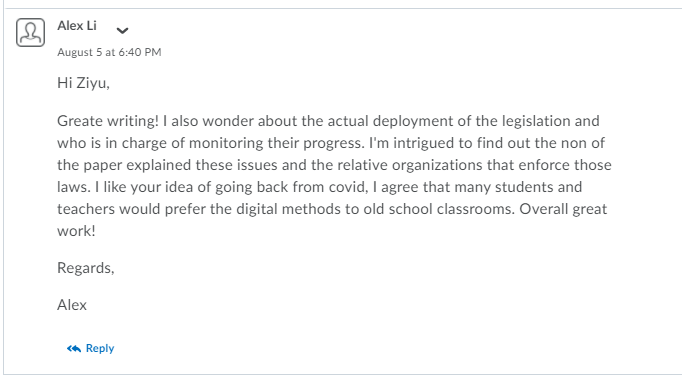
Blog 2 in this series discussed the relevance of Massive Open Online Courses in the dispensation of teaching activities and practices. Similarly.
Blog 2 link: https://ziyuzhou.opened.ca/topic-2/
Comments I received:

Comments I made:
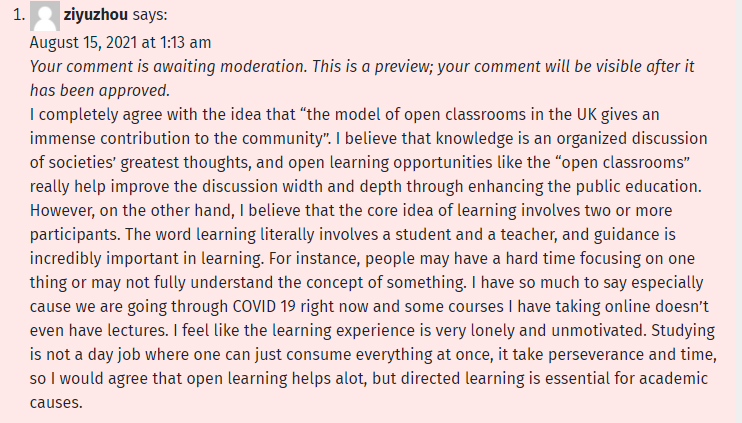
Blog 3 explored the future of education by exploring the significance of technology in defining education. One of the critical aspects that it looked at is the concept of Open Pedagogy that facilitates interest-driven learning and incorporates education-oriented technology to facilitate the teaching of theories and contents of the class. Students are the key creators of knowledge.
Blog 3 link: https://ziyuzhou.opened.ca/topic-3/
Comments I recveived:

Comments I made:
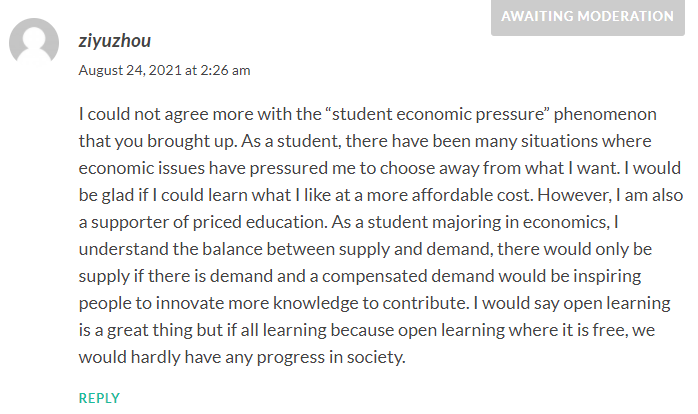

My fourth blog, which focused on topic 4 of the syllabus, oriented that the internet has been an integral part of education because it facilitates interactions among students and between learners and their teachers. In this blog, I noted the internet’s importance in promoting information and resource sharing among learners.
Blog 4 link: https://ziyuzhou.opened.ca/topic-4/
Comments I received:

In all my blogs, I explored the importance of the internet and digital technology in facilitating learning. The readings in each week oriented the fact that digital technology is crucial in enhancing and simplifying learning by fostering an asynchronous learning environment where there is little need for real-time interaction among students. I demonstrated that through digital technologies, learners could determine the right time to pursue the courses, unlimited access to resources provided on the internet, participate in creating knowledge through technologies, and embrace interest-driven learning through education-oriented technologies. One of the issues that came out from the blogs is that technology assists in solving real-world problems and simplifying access to education and related resources. For instance, internet technology has enabled students to learn through online platforms during this Covid-19 global pandemic. Similarly, they have made it easier for learners to schedule their time and participate in educational activities without necessarily having to avail themselves in class as in the traditional learning environments. As a result, all four blogs noted that digital technology had opened virtual spaces for learners to pursue their courses effectively.
Importantly, I learned from this course’s activities that technology had created a virtual environment that learners no longer need to attend physical classrooms or spend much time in the libraries to get the resources that they desire as long as there is proper infrastructure, which involves computer devices and reliable internet access technologies. With technology, learners can attend their lessons in their free time regardless of the location and time. This perspective has made it easier to pursue education for full-time employees, students in other academic programs, and individuals having personal issues to attend to without interfering with their academic calendar. Besides, I learned that technology has broken the essential barriers, especially distance, and made it possible for someone in Asia, Africa, or Europe to enroll for a course in a United States university and pursue it successfully without necessarily traveling to the United States. As a result, digital technology is the driving force that shapes the future.
Part 2: “Showcase” Blog Post
Original version of the post: https://ziyuzhou.opened.ca/topic-3/
Updated version of the post: https://ziyuzhou.opened.ca/updated-topic-3-post/
The reasons for the change I made:
After reading further materials, I added one part to explain how open learning is reversed when some institutions virtually control access to what students search and I added another part to explain a bit more on the advantages and disadvantages of redlining. Also, I added some statements to provide some of the solutions that might be helpful in ensuring effective use of digital redlining in learning institutions.
References:
Learning spaces – ANU. (2019, April 11). ANU Press. https://press-files.anu.edu.au/downloads/press/p197731/html/ch04.html?referer=&page=10#toc_marker-11
Miyahara, M. (2017). Creating space for learning. Realizing Autonomy. https://doi.org/10.1057/9780230358485.0012
Temesio, S. (2020). Accessible open educational resources and librarian involvement. International Journal of Open Educational Resources, 3(1). https://doi.org/10.18278/ijoer.3.1.7
Leave a Reply